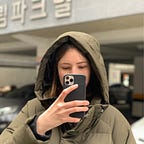Telesthetic Prehension
Design a digital and physical object that prehends its surroundings
Group members 🤝: Sanya Nayar, Rikkie Xiong, Kate Chernysheva and Maria Shuttleworth
<<< For my previous project on Xenosomatics, click here.
This week we welcomed Tyler Fox from the University of Washington as our guest lecturer, who had planned a week on Telesthetic Prehensions for us.
We began by reading about Object-Oriented Ontology (OOO) (Lindley et al, 2019).
Although a tricky concept to grasp, I understood it as an ontology that places things, not humans, at the centre of study. It states that everything exists equally, and ponders their relations with other objects as much as with ourselves.
“Designers are compelled to design for humans from the onset”. … “OOO’s withdrawal of objects allows for them to coexist among humans and thus design can see these objects as equally consequential, or equally inconsequential, depending how you look at it”. (Lindley et al, 2019).
This way of thinking “dethrones” human beings, making their subjectivity a little less special (arguing against anthropocentrism). It gets us thinking about a reality beyond our reality — objects having other qualities which are unknown, even unknowable, to human beings (Akiyama, 2017).
In our first meeting with Tyler he introduced us to the concept of Prehension, describing it as “an affordance within the interaction”. Here, the object prehends you, and your interactions with it.
For the remainder of this week, we were asked to consider the following:
“How do you think about prehension from an object perspective without being anthropocentric?”
Exploring Telesthetic Prehensions.
Describable as “The sensing of the world done remotely”, we had to design something that senses other objects not in the same place as itself via the internet.
As this was a particularly difficult task, we were encouraged to explore failure — our teachers stating: “catastrophic disasters are joyful and encouraged”.
In groups, we started thinking about research methods we could use — Artefact Analysis jumping out as an obvious starting point. We also decided to explore Storyboarding.
Animism.
We all found the concept of animism and spiritual prehensions very interesting and shared some cultural anecdotes that could link to our research e.g. we talked about Domovoi in Russian culture, Tibetan bells from Indian, and musical instruments in Chinese.
To cut our ramblings short, we brainstormed ideas relating to animism so that we could narrow down our projects direction.
After discussing we decided to take some time between now and the next meeting to do some Artefact Analysis on an item we believed could have a spirit attached to it. We wanted to not only explore religious items, but anything around our rooms that we could imagine could have some sort of soul.
I chose a plant pot.
After conducting my research I imagined that my plant pot might have a “defender” type personality as the kind of pot I used is for baby/small plants. I guessed that the pot might have wanted to look after the plant it is carrying, so I also gave it a personality within its “soul”. For example, it will not like you if you do not water the plant, and it would like you if you do.
We met up the next day and discussed our research. After talking through our ideas we decided to go down the plant pot route and began Storyboarding.
From Storyboarding I deducted that the plant pot must be really aware of the plant it carries as it it one of its main surroundings. So, it prehends the plants needs and could help amplify them.
Tutorial.
We had a tutorial with our course leader and discussed our ideas so far. We mentioned that we wanted to explore projection mapping for this project and he supported the idea, but urged us to consider how we might telesthetically prehend the animalistic aspects of an object through this method.
He also said that we have spent enough time talking, and that we need to try making some things — sometimes the best thing to do is to just get stuck in.
For the next part of this project, click here. >>>
References.
- Akiyama, K., 2017. Digital Animism: Through Looking at the Meaning within Noise | Interactive Architecture Lab. [online] Interactivearchitecture.org. Available at: <http://www.interactivearchitecture.org/digital-animism-through-looking-at-the-meaning-within-noise.html> [Accessed 6 February 2021].
- Donaldson, M., 2017. Plutchik’s Wheel Of Emotions — 2017 Update • Six Seconds. [online] Six Seconds. Available at: <http://www.6seconds.org/2017/04/27/plutchiks-model-of-emotions/>.
- Lindley, J., Akmal, H. and Coulton, P., 2019. Design Research and Object-Oriented Ontology. Open Philosophy, 3(1), pp.11–41.
- Mu Design. 2021. Lua — Mu Design. [online] Available at: <https://mu-design.lu/lua#in-more-detail> [Accessed 6 February 2021].
